Keeping Bees on the Homestead: A Comprehensive Guide for Beginners
Embark on a harmonious beekeeping journey... Unleash the natural bounty of your homestead with this comprehensive guide to keeping bees. Learn the essentials of beehive management, honey production, and the transformative impact of bees on your ecosystem.
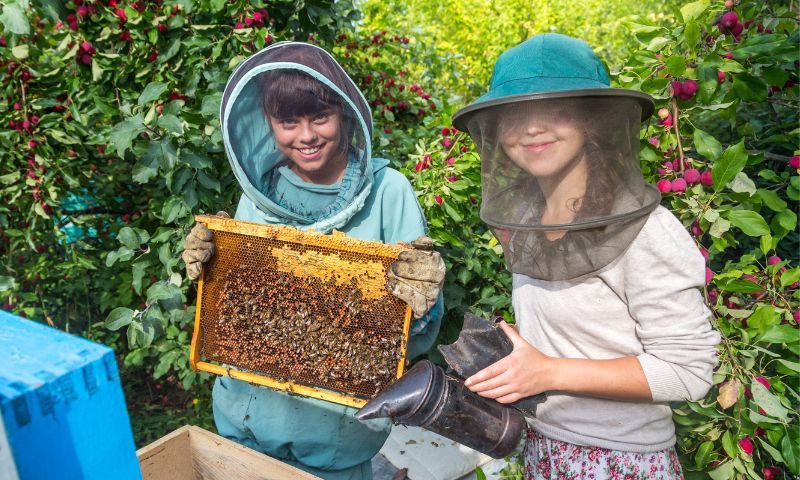
Introduction: Unveiling the Buzz of Homestead Beekeeping
Imagine stepping out into your sun-drenched homestead, the air alive with the gentle hum of industrious bees. Picture vibrant wildflowers swaying in the breeze, their nectar-filled blossoms beckoning these tireless pollinators. Envision yourself harvesting the sweet rewards of their labor, golden honey glistening in your hands, a testament to the harmonious partnership between you and nature's winged wonders.
Welcome to the captivating world of homestead beekeeping, a journey that intertwines sustainable living with the mesmerizing rhythm of the beehive. Embark on this enriching endeavor and discover the profound impact of bees on your ecosystem, their tireless efforts enriching your crops and fostering a thriving biodiversity.
Delve into the intricacies of beehive management, mastering the art of establishing and maintaining a thriving colony. Equip yourself with the essential tools and equipment, transforming into a seasoned beekeeper, armed with knowledge and expertise.
Unravel the mysteries of honey production, tracing the nectar's journey from delicate flower to golden elixir. Learn the art of harvesting honey responsibly, ensuring the well-being of your bees while preserving the integrity of nature's sweet gift.
Embrace the challenges and rewards that accompany homestead beekeeping, navigating common issues with confidence and resourcefulness. Discover the diverse applications of honey beyond its culinary delights, exploring its medicinal properties and potential industrial uses.
Witness the transformative impact of bees on your homestead's ecosystem, reveling in the increased pollination, enhanced crop yields, and thriving biodiversity that their presence orchestrates.
Prepare to embark on a beekeeping journey filled with continuous learning, challenges, and profound rewards. Embrace the wisdom of experienced beekeepers, tap into the wealth of online resources, and approach this endeavor with unwavering patience and a deep-rooted passion for apiculture.
So, step into the world of homestead beekeeping, where the buzz of nature's symphony resonates with the rhythm of your soul. Discover the profound connection between humans and bees, a bond that blossoms into a harmonious dance of sustainability and abundance.
Essential Beekeeping Equipment
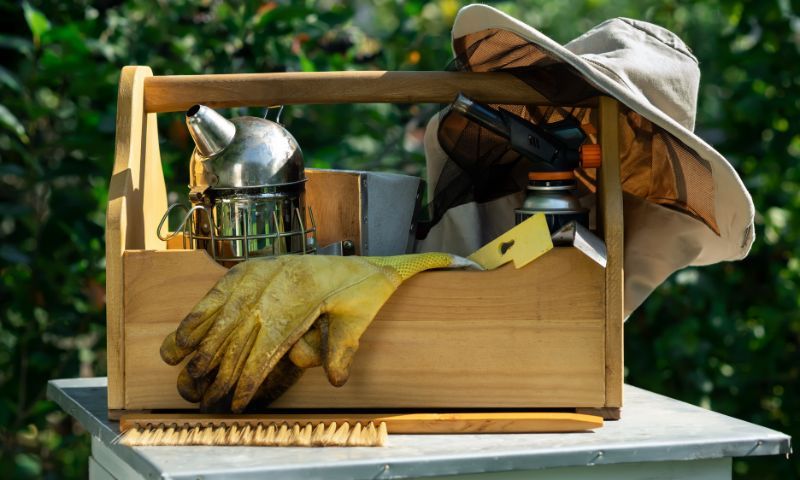
As you embark on your beekeeping journey, equipping yourself with the necessary tools and equipment is crucial for ensuring the success and well-being of your bee colony. From establishing a thriving hive to harvesting the sweet rewards of their labor, each task requires specific tools that will become your faithful companions in the world of apiculture.
The Beekeeper's Toolkit: Your Arsenal for Success
Your beekeeping toolkit is an essential collection of tools that will empower you to manage your hive effectively and confidently. Each item serves a unique purpose, enabling you to perform essential tasks with precision and care.
- Beehives: The heart of your beekeeping endeavor, beehives provide a safe and comfortable home for your colony. Choose a hive style that suits your climate, preferences, and bee management goals.
- Frames: Within the beehive, frames form the foundation for honey production and brood rearing. These frames provide a structured surface for bees to build their honeycomb and lay eggs.
- Smokers: A beekeeper's smoker is an indispensable tool for temporarily subduing bees during hive inspections and honey harvesting. The smoke creates a calming effect, allowing you to work safely and efficiently.
- Hive Tools: A hive tool is a versatile multi-purpose tool essential for a variety of tasks, including prying open hive frames, removing propolis, and scraping debris from equipment.
- Protective Gear: Protecting yourself from bee stings is paramount. Invest in a bee suit, gloves, and veil to ensure your safety and comfort during hive manipulations.
Acquiring Bee Colonies: Welcoming New Residents
Establishing a bee colony is an exciting step in your beekeeping journey. There are several methods for acquiring bees, each with its own advantages and considerations.
- Purchasing Packages of Bees: This method involves acquiring a packaged colony, typically containing a queen, worker bees, and brood, ready to be installed in your prepared hive.
- Capturing Swarms: Swarming is a natural behavior of honey bees, where a portion of the colony leaves to establish a new home. Capturing swarms can provide a free and natural way to start your bee colony.
- Splitting Existing Hives: Experienced beekeepers may choose to split existing hives, dividing a thriving colony into two or more smaller ones. This method requires careful planning and execution to ensure the success of both colonies.
Beehive Management and Maintenance
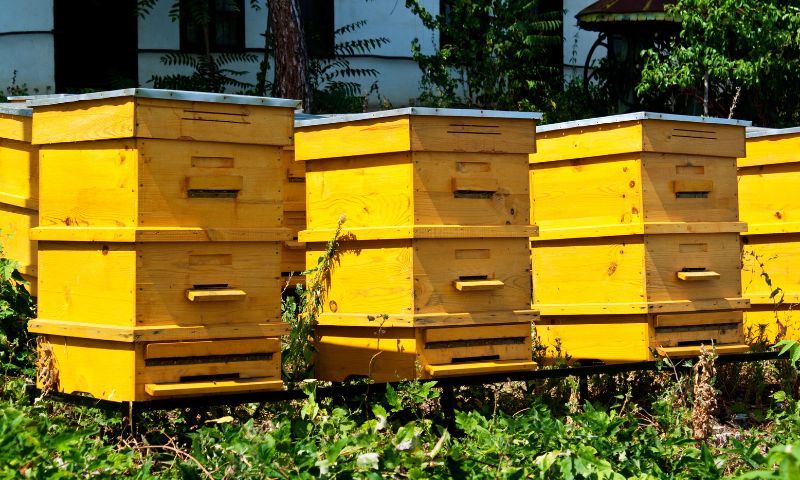
As the guardian of your bee colony, effective beehive management and maintenance are paramount to ensuring the health, productivity, and overall well-being of your bees. From establishing a harmonious home for your colony to providing ongoing care throughout the seasons, each aspect of beehive management requires careful attention and a deep understanding of bee biology and behavior.
Establishing a Beehive on Your Homestead: Choosing the Perfect Location
The placement of your beehive is crucial for the success of your colony. Select a site that offers ample sunlight for foraging, easy access to a water source, and proximity to flowering plants. Consider factors like wind exposure, noise levels, and potential pesticide use in the surrounding area.
Understanding Beehive Dynamics: Delving into the Social Structure
A beehive is a bustling metropolis, filled with intricate social dynamics and a complex division of labor. The queen bee, the sole reproductive female, lays eggs that will become the next generation of bees. Worker bees, all female, perform a multitude of tasks, from foraging for nectar and pollen to constructing honeycomb and caring for the brood. Drone bees, the male bees, are responsible for mating with the queen.
Hive Inspections and Seasonal Care: Monitoring for Health and Well-being
Regular hive inspections are essential for monitoring the health and well-being of your colony. Check for signs of pests, diseases, and any potential issues that could affect the colony's productivity. Adapt your care practices to the changing seasons, providing additional insulation during cold weather and ensuring adequate ventilation during warm months.
Potential Challenges and Troubleshooting
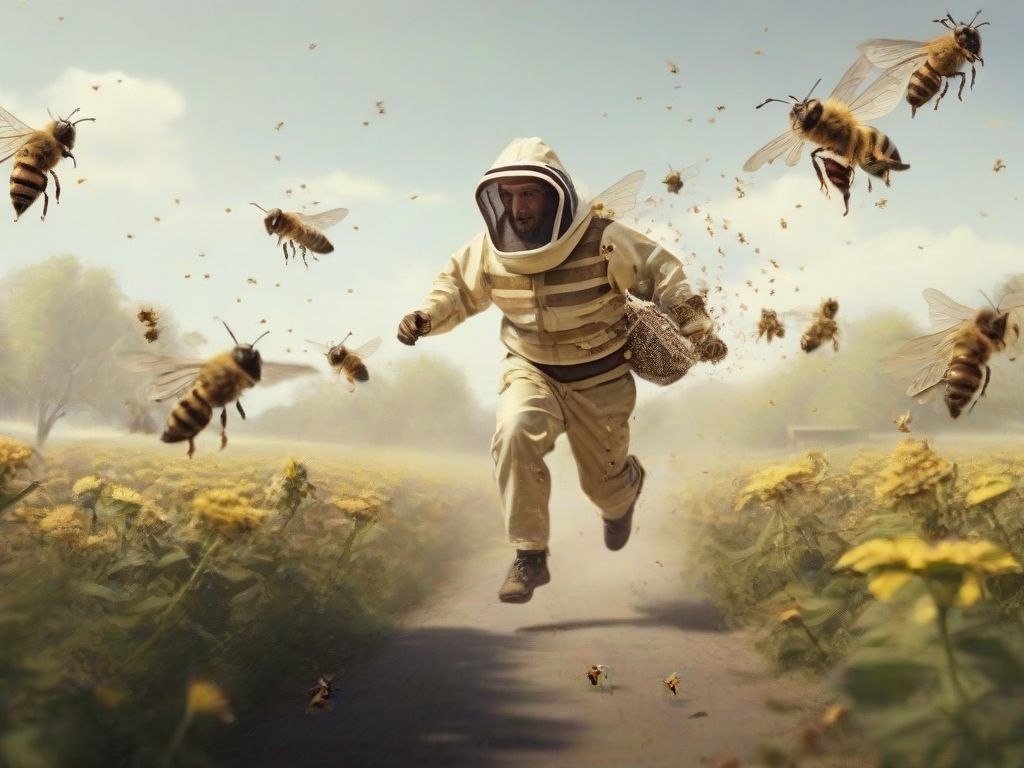
As you embark on your beekeeping journey, it is important to be prepared for potential challenges that may arise. Beekeeping is a dynamic and ever-changing endeavor, and understanding how to effectively address common issues is crucial for the success of your colony.
Common Beekeeping Challenges: Navigating the Roadblocks
Despite the joys and rewards of beekeeping, there are several common challenges that beekeepers may encounter. These issues can range from pests and diseases to colony decline, and each requires a specific approach to resolution.
- Pests: Pests such as varroa mites and wax moths can wreak havoc on a beehive, causing damage to the brood and reducing honey production. Regular inspections and preventative measures, such as using natural pest control methods, are essential for protecting your colony.
- Diseases: Diseases like American foulbrood and Chalkbrood can devastate a beehive, affecting the larvae and causing widespread mortality. Early detection and prompt treatment are crucial for preventing the spread of diseases and preserving the colony's health.
- Colony Decline: Colony decline is a complex issue that can be caused by a combination of factors, including environmental stressors, pesticide use, and nutritional deficiencies. Implementing sustainable beekeeping practices, such as providing diverse food sources and minimizing pesticide exposure, can help mitigate colony decline.

Troubleshooting Beehive Problems: Becoming a Beekeeping Detective
When faced with beehive problems, it is essential to approach the situation with a methodical and investigative mindset. Effective troubleshooting involves identifying the root cause of the issue, implementing appropriate corrective measures, and monitoring the colony's response.
- Careful Observation: Observe the behavior of your bees, noting any changes in activity levels, flight patterns, or hive entrance behavior. These observations can provide valuable clues to the underlying issue.
- Regular Inspections: Conduct thorough hive inspections on a regular basis, checking for signs of pests, diseases, or unusual brood patterns. Early detection is key to preventing problems from escalating.
- Consulting Resources: Utilize online resources, beekeeping associations, and experienced beekeepers to gain insights and guidance in troubleshooting beehive problems. A collaborative approach can lead to effective solutions.
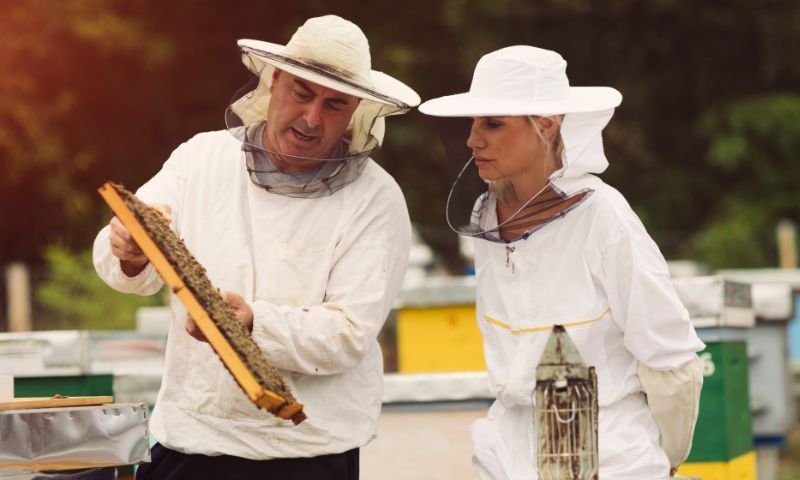
The Rewards of Beekeeping on the Homestead
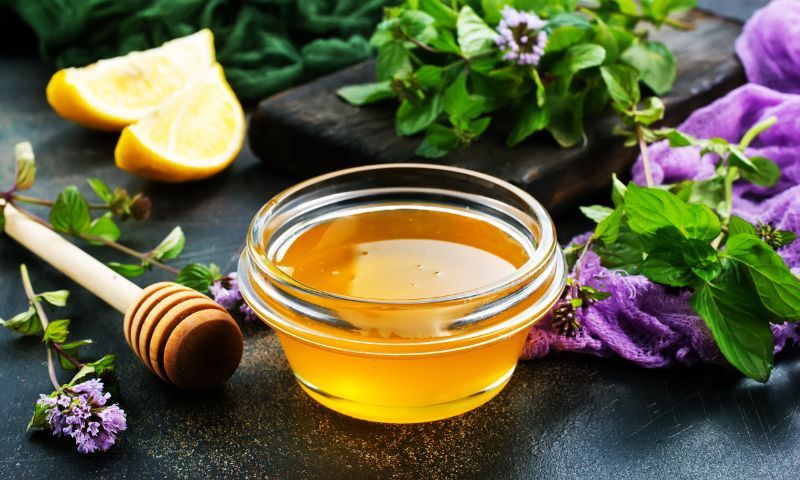
As your beekeeping journey unfolds, the rewards extend far beyond the golden jars of honey that grace your pantry shelves. The presence of bees on your homestead brings with it a multitude of benefits, transforming your ecosystem and enriching your connection with nature's intricate tapestry.
A Bounty of Honey and Beyond: Unlocking Honey's Diverse Applications
Honey, the sweet nectar of bees, is a culinary delight, gracing our tables and adding a touch of sweetness to our daily lives. Yet, the benefits of honey extend far beyond its culinary applications.
- Medicinal Properties: Honey has long been revered for its medicinal properties, with potential antibacterial, antifungal, and anti-inflammatory effects. Studies have shown its effectiveness in treating wounds, soothing coughs, and alleviating allergies.
- Cosmetic Benefits: Honey's moisturizing and humectant properties make it a popular ingredient in natural skincare products. It can help retain moisture in the skin, reducing dryness and promoting a healthy glow.
- Industrial Uses: The versatility of honey extends into the industrial realm, where it is explored as a potential ingredient in bioplastics and biofuels. Honey's unique properties offer sustainable alternatives to traditional materials, reducing our environmental impact.
A Sustainable Ecosystem: Fostering Biodiversity and Enhancing Crop Yields
Bees play a pivotal role in maintaining the delicate balance of our ecosystems. As tireless pollinators, they flit from flower to flower, ensuring the pollination of crops and wild plants alike.
- Enhanced Pollination: The presence of bees on your homestead ensures the pollination of your crops, leading to increased yields and a bountiful harvest. Their pollination efforts also contribute to the overall health and diversity of your ecosystem.
- Biodiversity Thrives: Bees are not just pollinators; they are key players in the complex web of life. Their presence attracts other beneficial insects, birds, and wildlife, fostering biodiversity and enriching the natural landscape.
A Journey of Continuous Learning and Connection with Nature
Embarking on a beekeeping journey is an invitation to delve into the fascinating world of apiology, a journey of continuous learning, exploration, and connection with nature.
- The Art of Apiculture: Beekeeping is an art, requiring patience, observation, and a deep understanding of bee behavior. As you nurture your bee colony, you become a steward of nature, fostering a harmonious relationship with these remarkable insects.
- A Community of Bee Enthusiasts: The world of beekeeping is not solitary; it is a vibrant community of passionate individuals dedicated to the well-being of bees and the preservation of their role in our ecosystems.
As you tend to your bees, you become a part of this community, sharing knowledge, exchanging experiences, and collectively working towards a future where bees thrive, ensuring the continued bounty of nature's sweet rewards.
Final Thoughts
As we conclude this beekeeping odyssey, let's recap the transformative power of embracing the art of beekeeping and the profound impact it has on your homestead.
From understanding the meticulous process of honey production to mastering the intricacies of hive management, each section has unveiled the secrets and techniques that elevate ordinary meals into extraordinary culinary experiences.
The transformative nature of beekeeping extends beyond the kitchen. Your homestead becomes a haven for biodiversity, a thriving ecosystem where bees diligently pollinate your crops, ensuring bountiful harvests.
Embrace the journey of continuous learning, exploration, and refinement that beekeeping offers. Delve into the fascinating world of apiology, connect with a vibrant community of bee enthusiasts, and transform yourself into a guardian of nature.
Remember, beekeeping is not just a hobby; it's an act of environmental stewardship, a harmonious dance between humans and nature. As you embark on this journey, approach it with patience, dedication, and a deep-rooted passion for apiculture.
Embrace the buzz of beekeeping, and let your homestead blossom into a sanctuary for these remarkable insects, the unsung heroes of our ecosystems.
FAQ
What is beekeeping?
Beekeeping, also known as apiculture, is the practice of keeping and managing bee colonies. Beekeepers maintain beehives, harvest honey and other bee products, and help to protect and preserve bee populations.
Here are some of the benefits of beekeeping on the homestead:
- Increased crop yields: Bees are essential pollinators, and their presence on your homestead can lead to increased yields of fruits, vegetables, and other crops.
- Improved pollination of wild plants: Bees also pollinate many wild plants, which helps to maintain the biodiversity of your ecosystem.
- Production of honey and other bee products: Honey is a delicious and nutritious food that can be used in a variety of ways. Bees also produce other products, such as beeswax, pollen, and propolis, which can be used in cosmetics, health remedies, and other applications.
- Reduced reliance on pesticides: Bees are an important part of the natural pest control system, and their presence on your homestead can help to reduce your reliance on harmful pesticides.
- Increased connection to nature: Beekeeping can be a rewarding and enriching experience that can help you to develop a deeper connection to nature.
What equipment do I need to get started with beekeeping?
- Beehive: The beehive is the home of your bee colony. You can purchase a pre-made beehive or build your own.
- Frames: Frames are used to hold the honeycomb that bees build to store honey and brood.
- Smoker: A smoker is used to calm bees during hive inspections.
- Hive tool: A hive tool is used to pry open frames and scrape debris from equipment.
- Protective gear: Protective gear, such as a bee suit, gloves, and veil, is essential for protecting yourself from bee stings.
What are the different types of beehives?
- Langstroth hive: The Langstroth hive is the most popular type of beehive in the United States. It is a rectangular hive with removable frames.
- Top-bar hive: The top-bar hive is a simpler type of hive that does not have removable frames. It is a good option for beginners.
- Flow hive: The Flow hive is a newer type of hive that has a built-in system for harvesting honey.
How do I get started with beekeeping?
- Take a beekeeping class: There are many beekeeping classes offered by local beekeeping clubs and extension offices. These classes will teach you the basics of beekeeping and give you hands-on experience with bees.
- Join a beekeeping club: Joining a beekeeping club is a great way to connect with other beekeepers and get help and advice.
- Find a mentor: Find an experienced beekeeper who can mentor you and help you get started with your beekeeping journey.
What are the challenges of beekeeping?
- Pests and diseases: Bees are susceptible to a number of pests and diseases, which can be difficult to control.
- Colony decline: Colony decline is a serious problem that is affecting bee populations around the world.
- Honey production: Honey production is a complex process that can be difficult to master.
What are some tips for new beekeepers?
- Start small: Begin with a small colony of bees to get started.
- Be patient: Beekeeping takes time and patience.
- Be prepared to learn: There is always more to learn about beekeeping.
- Don't be afraid to ask for help: There are many resources available to help you succeed with beekeeping.